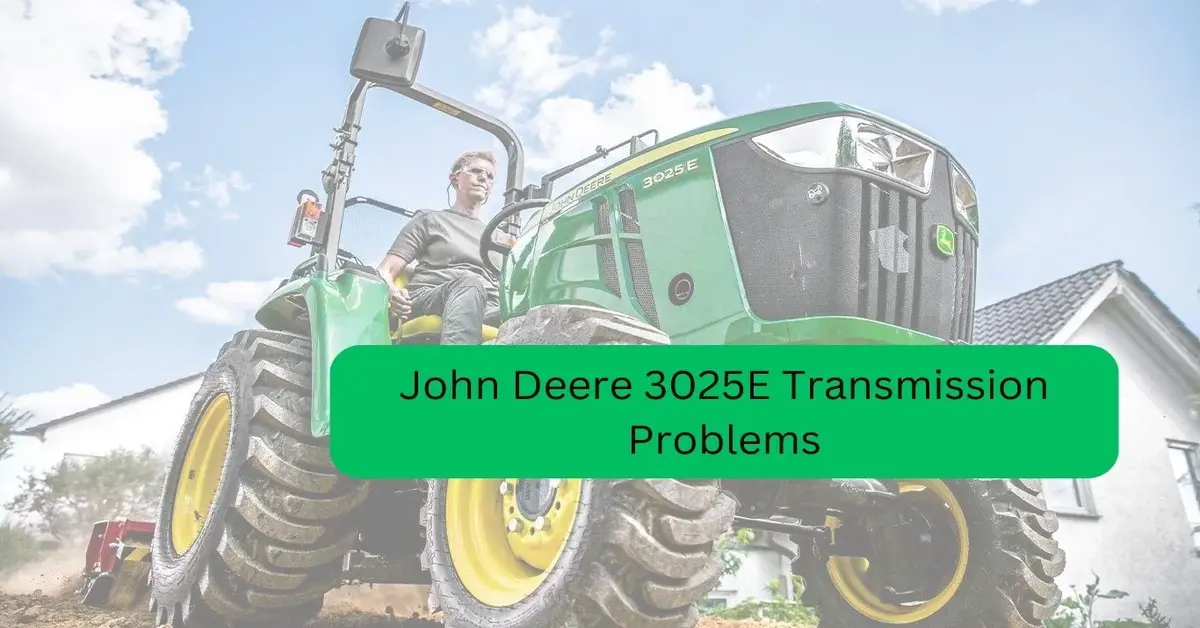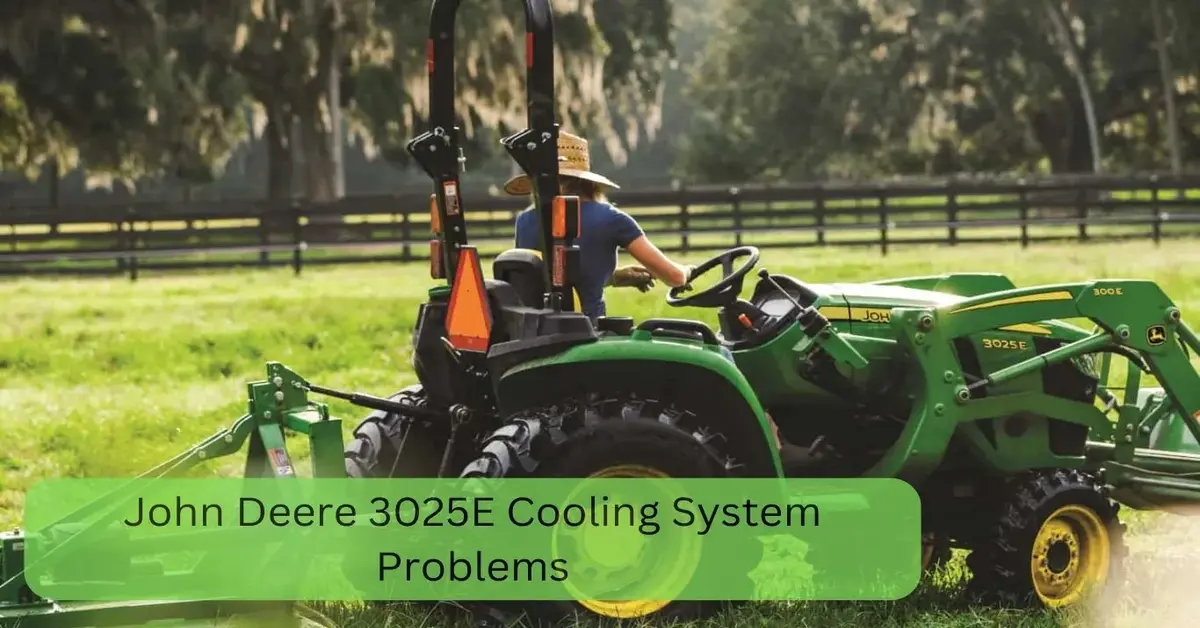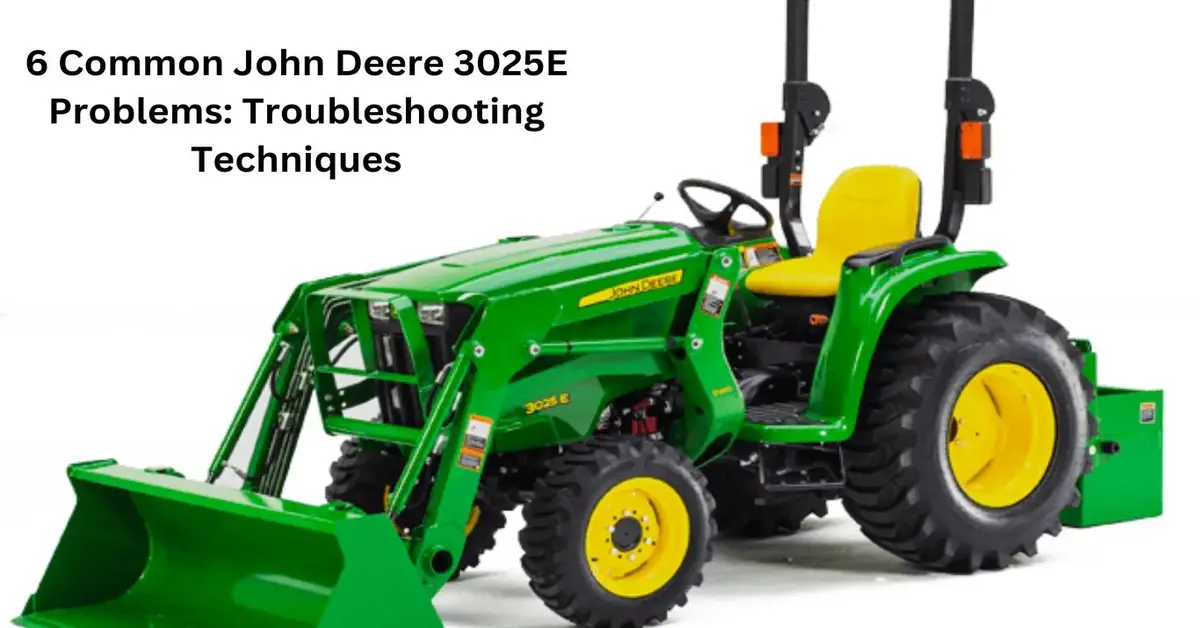The John Deere 3025E tractor model is a popular choice among farmers and property owners for its reliability and versatility. This compact utility tractor is designed to tackle a wide range of tasks, from mowing and landscaping to hauling and light construction work. However, like any piece of machinery, the John Deere 3025E is not immune to problems and issues that can arise over time.
Brief Overview of the John Deere 3025E Tractor Model
The John Deere 3025E is part of the 3E Series of compact utility tractors manufactured by John Deere, a renowned name in the agricultural machinery industry. With its powerful engine, easy-to-use controls, and durable construction, the 3025E is ideal for small to medium-sized farms, landscaping businesses, and residential property maintenance.
Importance of Troubleshooting Common Problems
When operating any piece of equipment, it’s essential to be aware of potential issues that may arise and how to address them promptly. Ignoring or neglecting problems can lead to costly repairs, downtime, and decreased productivity. By troubleshooting common problems proactively, tractor owners can ensure optimal performance, extend the lifespan of their equipment, and minimize the risk of breakdowns.
Purpose of the Blog Post
The purpose of this blog post is to identify and address six common issues that owners of John Deere 3025E tractors may encounter during operation. By providing troubleshooting techniques for these problems, tractor owners can effectively diagnose and resolve issues on their own, saving time and money on professional repairs. Whether you’re a seasoned farmer or a first-time tractor owner, this guide will help you keep your John Deere 3025E running smoothly for years to come.
Problem 1: Engine Starting Issues
Symptoms:
When you face problems starting your John Deere 3025E’s engine, it might show signs like having a hard time starting, the engine not turning over smoothly, or cranking slowly.
Troubleshooting Techniques:
To fix this issue, you can follow these simple steps:
-
Checking the Battery Connections:
- First, make sure the battery cables are securely connected to the battery terminals.
- If you notice any corrosion or loose connections, clean the terminals and tighten the cables properly.
-
Testing the Battery Voltage:
- Use a multimeter to check the voltage of the battery.
- A fully charged battery should have a voltage of around 12.6 volts. If it’s significantly lower, it might need recharging or replacement.
-
Inspecting the Starter Motor:
- Examine the starter motor for any visible damage or signs of wear.
- Ensure the connections to the starter motor are tight and secure.
- If the starter motor appears to be faulty, it may need to be repaired or replaced to resolve the starting issue.
Read More: John Deere CX15 vs HX15: A Detailed Comparison
Problem 2: Hydraulic System Malfunction
Symptoms:
When your John Deere 3025E hydraulic system isn’t working properly, you might notice that it’s not performing well. For example, your loader or other implements might move slowly or feel weak.
Troubleshooting Techniques:
Here are some steps you can take to troubleshoot and fix the issue:
-
Checking Hydraulic Fluid Level:
- Start by checking the hydraulic fluid level in the reservoir.
- If it’s low, add more fluid to the appropriate level according to the manufacturer’s recommendations.
-
Inspecting for Hydraulic Leaks:
- Look for any signs of hydraulic fluid leaks around the hydraulic lines, fittings, and connectors.
- If you spot any leaks, tighten the connections or replace any damaged components to stop the leakage.
-
Testing Hydraulic Pressure:
- Use a hydraulic pressure gauge to test the pressure of the hydraulic system.
- Compare the measured pressure to the recommended specifications in the tractor’s manual.
- If the pressure is too low, there may be a problem with the hydraulic pump or other components that require further inspection.
Read More: The Key Differences Between John Deere 750 Dozer VS Cat D6

Problem 3: Transmission Problems
Symptoms:
When your John Deere 3025E’s transmission is having issues, you might find it hard to change gears smoothly. It might also slip out of gear unexpectedly, or you could hear strange noises coming from the transmission.
Troubleshooting Techniques:
Here are some steps you can take to troubleshoot transmission problems:
-
Checking Transmission Fluid Level and Condition:
- Begin by checking the transmission fluid level using the dipstick.
- Ensure that the fluid is at the proper level and appears clean and clear. If it’s low or dirty, it may need to be topped up or replaced.
-
Inspecting Transmission Linkage:
- Examine the transmission linkage for any signs of damage, wear, or misalignment.
- Ensure that the linkage is properly connected and adjusted according to the manufacturer’s specifications.
-
Testing Transmission Controls:
- Test the transmission controls, such as the gear shifter and clutch pedal, to ensure they are functioning correctly.
- Pay attention to any resistance or unusual sensations when operating the controls, as this could indicate underlying issues.
Read More: John Deere 5065E VS Kubota M6060
Problem 4: Electrical System Issues
Symptoms:
When your John Deere 3025E experiences electrical system issues, you may notice that the lights aren’t working correctly, the gauges are malfunctioning, or you’re encountering intermittent electrical problems.
Troubleshooting Techniques:
Here are some simple steps you can take to troubleshoot electrical system issues:
-
Checking Fuses and Relays:
- Begin by locating the fuse box and checking the fuses for any signs of damage or wear.
- Replace any blown fuses with ones of the correct amperage rating.
- Additionally, inspect the relays to ensure they are seated properly and functioning correctly.
-
Testing Electrical Connections:
- Inspect all electrical connections, including wires, plugs, and terminals, for signs of corrosion, looseness, or damage.
- Clean any dirty or corroded connections and tighten any loose terminals to ensure a secure electrical connection.
-
Inspecting Wiring Harnesses for Damage:
- Carefully examine the wiring harnesses throughout the tractor for any signs of fraying, cuts, or other damage.
- If you find any damaged wiring, repair or replace the affected harnesses to prevent electrical issues.
Read More: Common John Deere Z820A Problems: Troubleshooting Steps

Problem 5: Cooling System Troubles
Symptoms:
When your John Deere 3025E encounters cooling system troubles, you might notice that the engine is overheating, or there are coolant leaks, leading to a loss of coolant.
Troubleshooting Techniques:
Here are some simple steps you can take to troubleshoot cooling system issues:
-
Checking Coolant Level and Condition:
- Begin by opening the hood and locating the coolant reservoir.
- Check the coolant level and ensure it’s at the proper level according to the manufacturer’s recommendations.
- Additionally, inspect the coolant for any signs of contamination or discoloration, which could indicate a problem with the cooling system.
-
Inspecting Radiator and Hoses for Leaks or Blockages:
- Carefully examine the radiator and coolant hoses for any signs of leaks, cracks, or damage.
- Look for wet spots or puddles of coolant around the radiator and hoses, indicating a leak.
- Also, check for any debris or blockages obstructing the airflow through the radiator, which can contribute to overheating.
-
Testing Thermostat Operation:
- Test the thermostat to ensure it’s opening and closing properly to regulate the flow of coolant through the engine.
- You can do this by removing the thermostat and placing it in a pot of boiling water. It should open fully when heated and close completely when cooled.
Read More: Analyzing John Deere Z970R Problems: In-Depth Troubleshooting Steps
Problem 6: Steering and Suspension Issues
Symptoms:
When your John Deere 3025E faces steering and suspension issues, you might find it hard to steer, notice uneven tire wear, or experience excessive bouncing while driving.
Troubleshooting Techniques:
Here are some straightforward steps you can take to troubleshoot steering and suspension problems:
-
Checking Tire Pressure and Condition:
- Begin by inspecting the tires for proper inflation and any signs of damage, such as cuts, bulges, or uneven wear.
- Use a tire pressure gauge to measure the tire pressure and ensure it matches the recommended pressure listed in the tractor’s manual.
- Adjust the tire pressure as needed to correct any discrepancies and improve steering and ride quality.
-
Inspecting Steering Components for Wear or Damage:
- Examine the steering components, including the tie rods, ball joints, and steering linkage, for any signs of wear, looseness, or damage.
- Pay close attention to any excessive play or movement in the steering system, as this could indicate worn or damaged components that need to be replaced.
-
Testing Suspension System for Abnormalities:
- Test the suspension system by bouncing each corner of the tractor to check for excessive bouncing or rebound.
- Listen for any unusual noises coming from the suspension components, which could indicate worn shocks, springs, or bushings that require attention.
Read More: John Deere 100 Series Starting Problems: Include Solutions
Conclusion
In conclusion, owning a John Deere 3025E tractor comes with its share of challenges, but armed with the right troubleshooting techniques, you can keep your machine running smoothly. By addressing common problems such as engine starting issues, hydraulic system malfunctions, transmission problems, electrical system issues, cooling system troubles, and steering and suspension issues, you can ensure optimal performance and longevity for your tractor.
Regular maintenance, including checking fluid levels, inspecting components for damage, and testing systems for abnormalities, is key to preventing problems before they escalate. Remember to consult your tractor’s manual for specific troubleshooting instructions and always prioritize safety when performing maintenance tasks.
By staying proactive and addressing issues promptly, you can maximize the efficiency and reliability of your John Deere 3025E, allowing you to tackle any task with confidence and ease.
